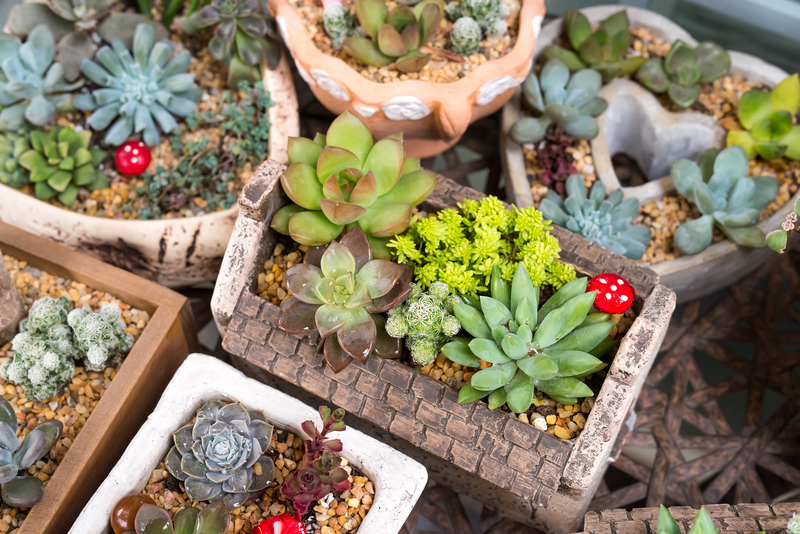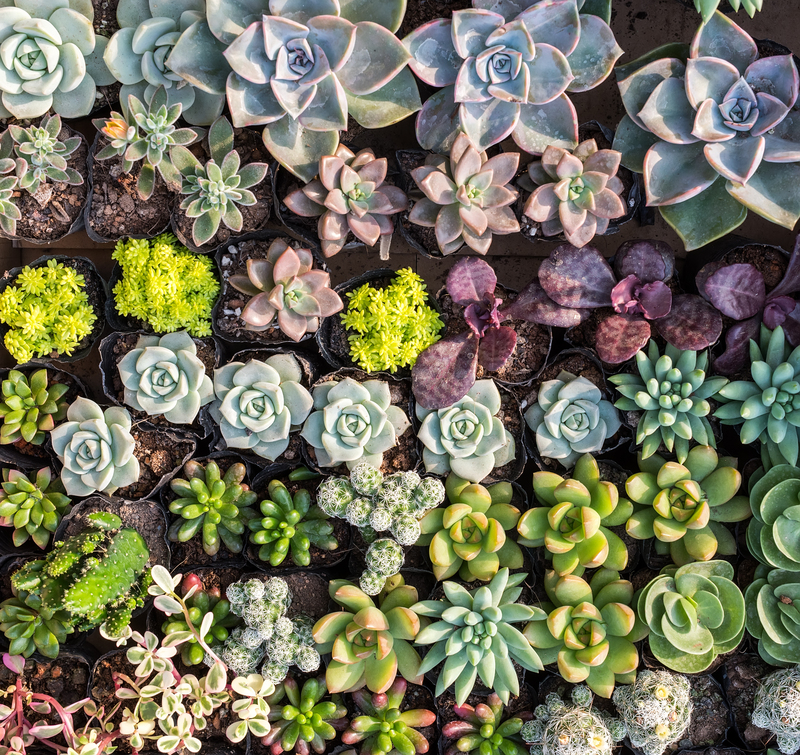Steps to a Playful and Secure Garden for Children
Posted on 23/09/2025
Steps to a Playful and Secure Garden for Children
Creating a playful and secure garden for children is a rewarding project that brings together fun, safety, and natural beauty. A well-designed child-friendly outdoor space fosters creativity, encourages physical activity, and gives parents peace of mind. In this guide, you'll discover practical steps, ideas, and expert tips to transform your garden into a playful and secure paradise for your kids.

Why Design a Safe and Fun Garden for Kids?
Outdoor play is essential for a child's physical, emotional, and cognitive development. Gardens tailored for children offer opportunities for adventure, learning, and relaxation while minimizing risks. By combining playful features with robust safety measures, you'll help your kids build happy childhood memories in a secure environment.
Benefits of a Child-Friendly Garden
- Encourages physical activity and imaginative play
- Promotes social and cooperative skills
- Stimulates curiosity about nature
- Provides a secure outdoor environment
- Offers a healthy alternative to screen time
1. Evaluate and Map Your Outdoor Space
Before introducing new features, assess your garden's current layout. Consider the following steps for analyzing and mapping the area:
- Identify boundaries: Make a note of fences, hedges, or natural borders
- Mark hazard areas: Ponds, hard surfaces, garden tools, and chemical storage
- Observe sunlight, shade, and drainage patterns
- Measure space available for play and rest zones
- Include existing trees, shrubs, and flower beds
Drawing a basic plan of your outdoor area helps in visualizing playful zones and ensuring sufficient space for secure pathways and supervision.
2. Focus on Garden Security for Children
Garden safety must be the foundation of your design. Reducing risks ensures kids can fully enjoy their outdoor playground. Here's how to secure a garden for children:
Secure Boundaries and Access Points
- Install childproof fencing at least 1.2 meters high
- Check for gaps or weak spots in existing boundaries
- Fit self-closing gates with childproof latches
- Keep gates locked when not in use
- Consider planting prickly shrubs for added deterrence (but avoid poisonous varieties)
Remove or Isolate Hazards
- Shield ponds and water features with secure covers or fencing
- Store chemicals, tools, and fertilizers in locked sheds
- Repair loose paving, stones, or uneven surfaces that can cause trips
- Remove sharp objects and thorny plants from main play areas
Ensuring a secure outdoor space for children gives parents the confidence that playtime will be safe and stress-free.
3. Design Playful Zones Suitable for Various Ages
A garden that caters to all ages encourages play, learning, and relaxation. Plan your layout to include:
- Active play zones: Space for running, ball games, and safe climbing structures
- Quiet corners: Hidden nooks with soft grass or shade for reading and daydreaming
- Imaginative play areas: Playhouses, sandpits, mud kitchens, or fairy gardens
- Nature discovery zones: Bug hotels, butterfly plants, or small vegetable patches
Choosing Age-Appropriate Garden Features
- Trampolines with safety nets for older children
- Low swings and slides for toddlers, anchored into soft surfaces
- Balancing beams and stepping stones for coordination development
- Picnic tables or benches for crafts and snacks
Tip: Involve children in designing their own play area--it boosts creativity and ownership, resulting in a more loved and respected space.
4. Use Safe, Child-Friendly Garden Materials
The choice of materials has a significant impact on garden safety and playability for children. Follow these guidelines:
Recommended Ground Coverings
- Soft grass: Cushions falls and is gentle on bare feet
- Rubber mulch or mats: Ideal for under play equipment to absorb impacts
- Wood chip: Provides a natural, soft surface around trees or quiet areas
- Artificial turf: Durable, low-maintenance alternative for high-traffic play spots
- Low-growing ground covers (like clover or creeping thyme): Add greenery without fuss
Isolate Hard Surfaces
- Keep stone patios, brick paths, and concrete areas separate from main play spaces
- Edge raised beds or wall borders with rounded stones or timber
- Cushion sharp corners with corner protectors or decorative soft planting
Choose Non-Toxic and Safe Materials
- Use paints, stains, and treatments labeled child-safe and non-toxic
- Avoid pressure-treated woods with chemicals harmful to children
- Opt for natural materials such as untreated timber and unpainted stone whenever possible
5. Add Engaging and Educational Garden Features
Children's gardens come alive with thoughtfully selected play objects and nature-based learning opportunities. Boost both fun and development by integrating:
Classic Play Equipment
- Swings, slides, climbing frames, and treehouses (with secure fixings)
- Seesaws, monkey bars, and balancing logs for movement and strength
- Wendy houses or tents for role-playing
Natural and Sensory Experiences
- Sandpits or mud kitchens to stimulate touch and creative skills
- Water play features such as splash pads or shallow streams
- Musical instruments: Chimes, drumming logs, or xylophones
- Planting beds for growing sunflowers, beans, and strawberries
- Bugs hotels, bird feeders, and butterfly gardens for nature observation
Sensory gardens with varied smells, textures, colors, and sounds make your outdoor area more exciting and inclusive for children of all ages and abilities.
6. Prioritize Supervision and Sight Lines
Clear lines of sight ensure parents can keep a close eye on children as they play. Here's how to improve supervision:
- Position play equipment within easy view of windows or main seating areas
- Keep tall hedges and sheds away from play zones to avoid hidden recesses
- Place parent seating at vantage points overlooking the whole garden
- Use low shrubs and open fence styles (like picket) to maintain visibility
Active supervision combined with thoughtful garden design keeps youngsters safe while giving them space to explore.
7. Plant Carefully: Choose Child-Safe, Low-Maintenance Greenery
Careful plant selection is vital to avoid allergies or poisoning and to promote an interactive, enjoyable space. Consider these tips:
Avoid Harmful Plants
- Remove or rope off foxglove, monkshood, laburnum, oleander, and yew (all toxic)
- Be mindful of plants with berries or seeds that look tempting but are unsafe
- Check for allergenic plants, especially if children have hay fever or eczema
Recommended Child-Friendly Plants
- Sunflowers, nasturtiums, marigolds, strawberries, and snapdragons
- Herbs like mint, thyme, and basil for touch and taste
- Grasses and plants with soft, feathery leaves
- Edible fruit bushes: Raspberries, blueberries, currants (with supervision)
Encourage Exploration
- Grow a den with willow branches or plant a teepee of climbing beans
- Create a sensory path using different surfaces, colors, or plant smells
- Set up a mini wildlife pond (with secure mesh cover) for frogs and insects
Healthy greenery enhances learning, creativity, and relaxation for children, all while beautifying your garden.
8. Plan for All-Weather Play
Enable year-round fun by designing areas that are usable whatever the weather:
- Install a waterproof canopy or shade sails over sandpits and patios
- Provide a shed or garden storage for outdoor toys and rain gear
- Use paths that don't become muddy or slippery
- Grow evergreen hedges or install windbreaks for sheltered spots
All-weather planning makes your secure and playful children's garden inviting throughout the seasons.
9. Grow with Your Children: Adaptable and Flexible Design
Children grow fast, and their interests change. Opt for modular and moveable play features--such as lightweight toys, portable sandboxes, and adjustable climbing equipment. This flexibility means the garden remains relevant and exciting as children age.
- Replace playhouses with trampolines or sports areas as children get older
- Expand vegetable patches or create hangout spaces for tweens and teens
Regularly reviewing garden features keeps the space fresh and ensures ongoing fun and safety.
10. Educate Children About Outdoor Safety
Empower children to care for their garden and themselves by teaching simple safety rules:
- Recognize and avoid dangerous plants and areas
- Put away toys and tools after use
- Wear shoes and sunhats as needed
- Close gates and stay within boundaries
- Respect wildlife and plants
Gardens can foster independence and responsibility--valuable life skills for every child.

Conclusion: Building a Secure and Playful Garden for Children
Designing a playful, safe garden for your children is both achievable and highly rewarding. By following these ten key steps, you'll create an inviting, secure, and imaginative outdoor space where your kids can play, learn, and thrive. Prioritizing safety doesn't mean sacrificing fun--instead, it provides the foundation for many seasons of adventure and happy family memories in your own backyard.
If you want even more garden design inspiration or need help with creating child-secure play zones, consult local landscaping professionals or search for interactive online garden planning tools. Your dream of a playful and secure children's garden is just a few steps away!
Frequently Asked Questions on Playful and Secure Gardens for Children
What is the safest surface for kids in a garden?
Soft grass, rubber mats, or woodchip mulch are among the best safety surfaces, particularly under and around play equipment, to cushion falls and prevent injuries.
How tall should garden fences be for child safety?
Fences should be at least 1.2 meters high with no gaps large enough for a child to crawl through. Childproof latches and self-closing gates are also recommended.
Which plants should I avoid in a children's garden?
Avoid toxic or allergenic plants like foxglove, laburnum, monkshood, oleander, and yew. Stick with edible, non-allergenic, and soft-leaved plants instead.
How can I keep my children's garden interesting as they grow?
Use flexible, modular features and update play zones as your children's interests change. Involve them in planning, planting, and building for a space that grows with them.
Create your secure and playful garden for children today, and enjoy years of safe, healthy, and joyful family life outdoors!

